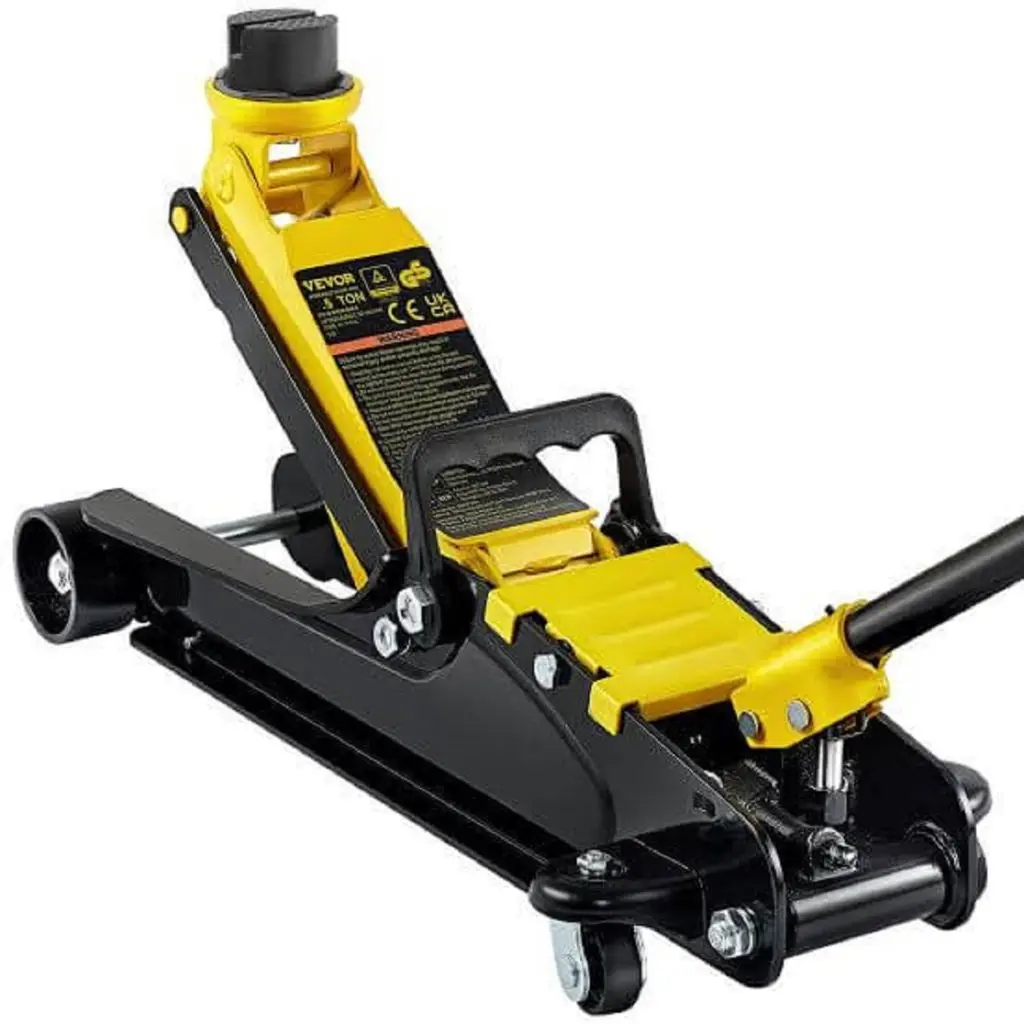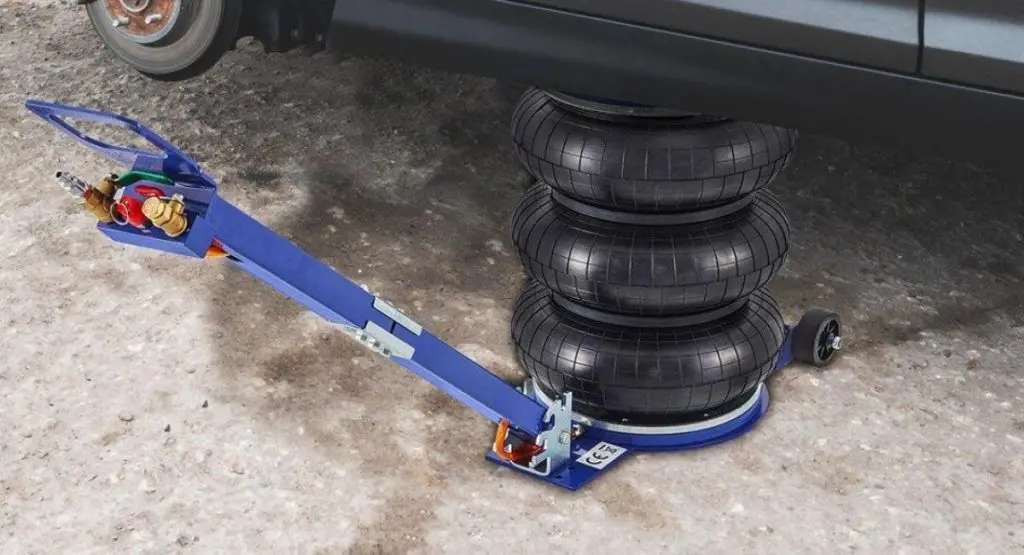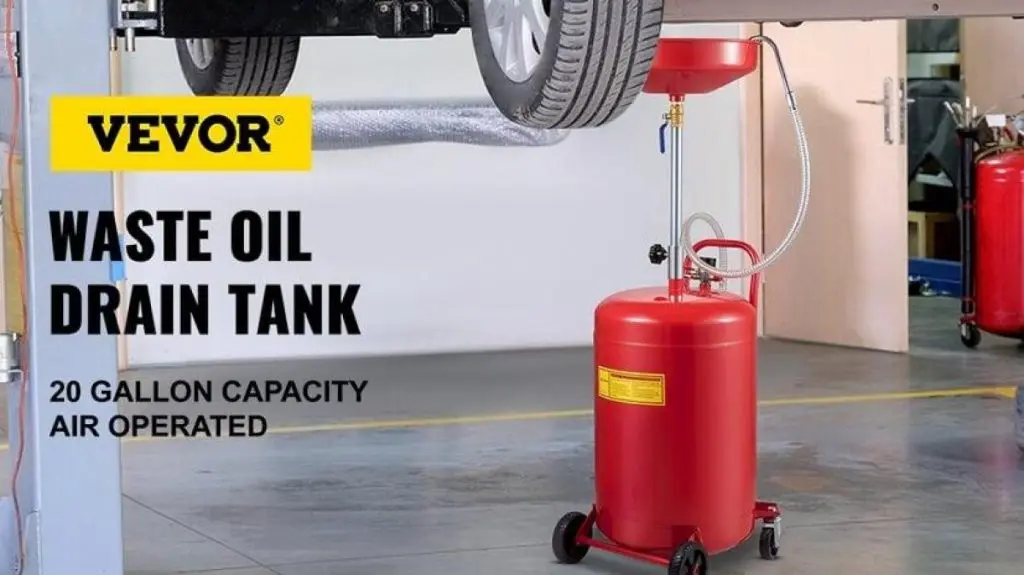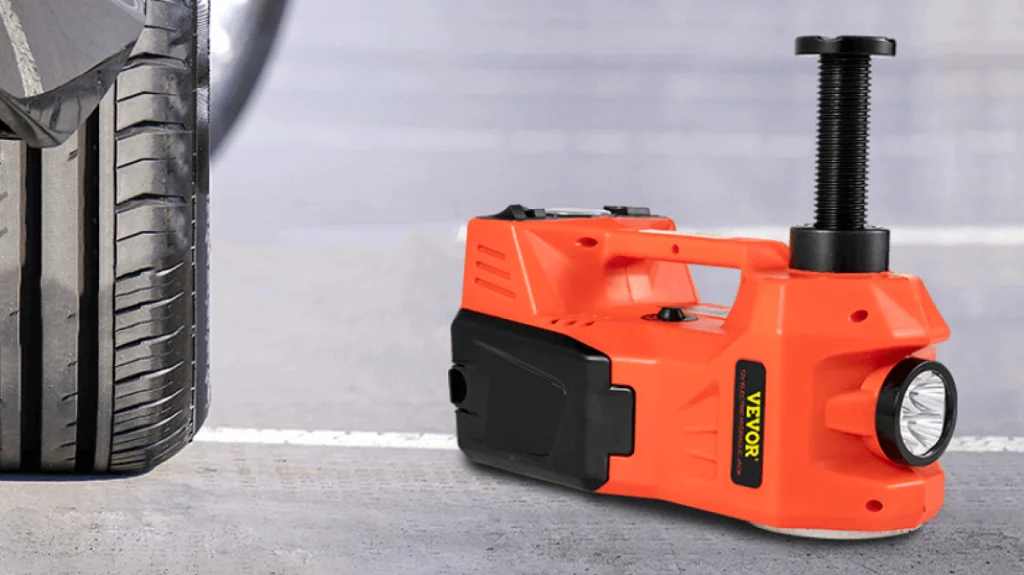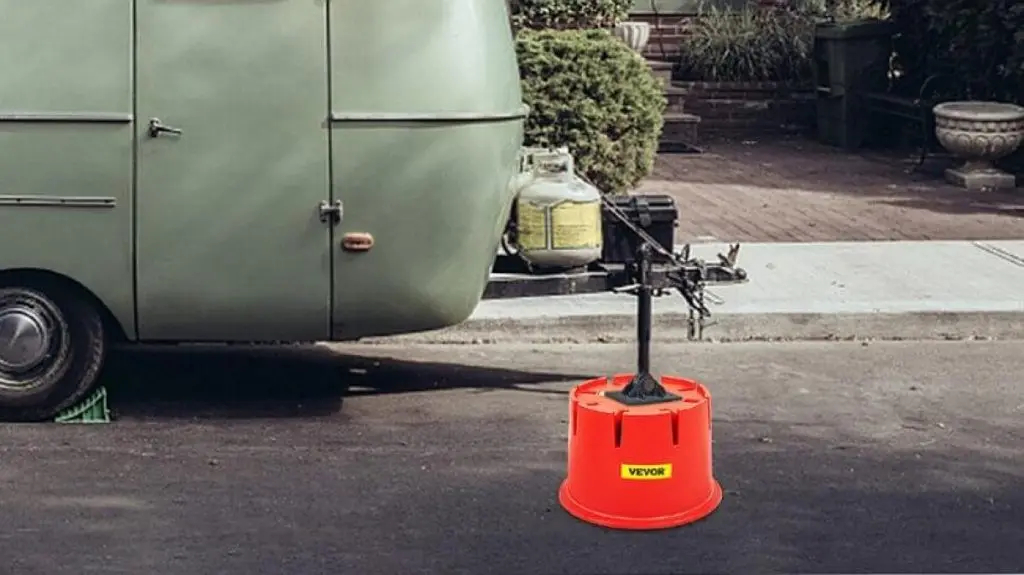Have you ever had a poorly working floor jack almost drop your car? This usually happens when your hydraulic system is clogged with air. Thus, bleeding your floor jack is necessary. The safety and efficiency of your floor jack depend on draining the hydraulic fluid of air bubbles. This process is called “bleeding the jack.”
Ideally, insufficient fluid or leakage can let air enter the hydraulic system. To rectify this issue, bleed your floor jack regularly or when air bubbles appear. Bleeding a floor jack is straightforward; you will only need a wrench and a flat surface. It is also important to mention that there may be severe consequences for neglecting to bleed a floor jack when necessary. Some of these consequences may include; loss of lifting power, uneven lifting, and potential safety hazards.
While bleeding your floor jack has proven to be very effective when the hydraulic system becomes clogged, you may reduce the chances of experiencing consistent clogging by investing in a quality floor jack. While there are several options in the market today, we advise that you go for a product like the VEVOR floor jack, since it is famed for elevating automobiles securely and dependably. This all-steel floor jack incorporates a 360° rotatable saddle and a safety valve to avoid hydraulic overload.
Learn why bleeding your floor jack is essential and how to do it in this article.
Table of contents
Understanding Why Bleeding Your Floor Jack is Essential
Bleeding your floor jack is an important but often overlooked maintenance step that can significantly improve the jack’s performance and safety. The next subsection details why bleeding your jack is important.
Why Should You Bleed Your Floor Jack?
When you need to empty the hydraulic fluid—the jack’s lifeblood, you need to “bleed” your floor jack. Hydraulic fluid transfers pressure from the pump to the piston, allowing your jack to lift huge items effortlessly.
However, your jack’s functionality and safety are jeopardized when air enters the hydraulic system, which disturbs the fluid’s flow and pressure. To prevent these issues, bleeding your floor jack becomes essential.
The Role of Hydraulic Fluid: Ensuring Smooth Operations and Lifting Power
Without the hydraulic fluid, your floor jack cannot lift heavy objects or operate smoothly. To establish a closed loop in which fluid flows from the pump to the piston, all you have to do is pump the handle.
However, when air bubbles pop into the fluid and cause holes, the closed loop loses some of its efficiency. Some of the anomalies that may result from such a situation include:
- Uneven lifting: The jack’s lifting or tilting will be uneven if the fluid contains air bubbles. Because of this, positioning the jack stands correctly or getting the jack under the vehicle becomes more of a challenge.
- Reduced lifting power: Fluid cannot transmit the entire pumping force to the piston when air bubbles are present, making the jack less powerful. This may render the jack totally inoperable or drastically reduce its lifting capacity.
- Spongy feels: The pump might seem spongy if air bubbles are present in the fluid because the air will compress and expand within the system. As a result, regulating the lifting height, speed, and pressure release could become more complex.
Avoiding Safety Hazards: Maintaining Control and Preventing Accidents
In hydraulic systems, air bubbles are dangerous and an annoyance at the same. Failure of the floor jack could cause damage to the car, and put you at risk. For instance, if the car slides off the jack or stand because of an uneven or tilted elevation, it could cause injuries or damage.
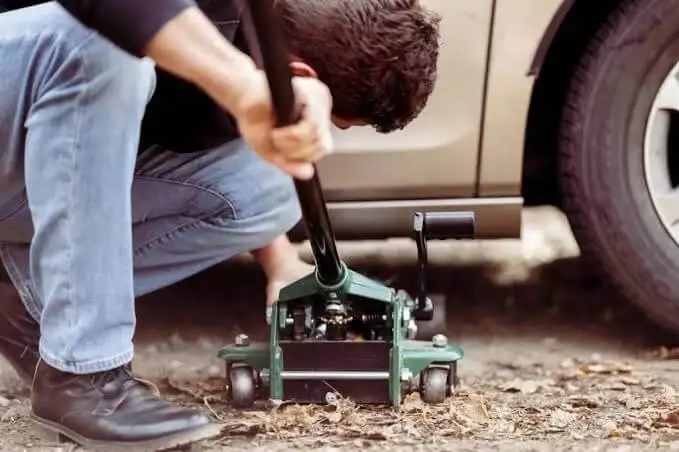
Usually, if your jack will not rise, it might be because you are attempting to pump it while it is stuck under a heavy load. Unexpected falls can occur on jacks that are either too spongy or too slow to change pressure or height. Ultimately, bleeding your floor jack can ensure the hydraulic system is working effectively again. It can also help you maintain your floor jack so that it lasts longer and works better.
Warning Signs: Telling When Your Floor Jack Needs Bleeding
Can you tell if your floor jack needs bleeding? Ideally, there are a number of warning signs that indicate your jack’s performance is not top-notch anymore that you must be aware of. Below are some red flags to know your floor jack needs bleeding:
- Increased number of pumps required to lift the vehicle: Air in the hydraulic system may increase the number of pumps needed to raise the vehicle. You will notice that you’d need to pump the handle more than usual to raise your vehicle. Air reduces hydraulic fluid pressure and flow, making load lifting difficult for the jack.
- Uneven or erratic lifting behavior: Jacks that lift unevenly or sporadically may have air, so watch out for that. Due to pressure distribution differences, air jacks should not lean or lift unevenly. This can make positioning the jack under the vehicle or aligning the jack stands difficult.
- Spongy or unresponsive feel when pumping the handle: If your jack handle feels spongy or unresponsive, air may be in the hydraulic system. Due to compression and expansion, pumping the handle makes the air spongy. Because of this, regulating lifting height, pace, and pressure release may be difficult.
- Visible air bubbles in the hydraulic fluid reservoir: You can see bubbles in the hydraulic fluid in floor jacks with see-through reservoirs. Air in a system causes tiny bubbles or foam in the fluid. Because of this, the fluid level may appear lower than it is.
How to Bleed Your Floor Jack: A Step-by-Step Guide
After learning why and when to bleed your floor jack, it is time to show you how to bleed your jack in a few easy steps. For the purpose of analysis, we will use the process involved in bleeding the VEVOR floor jack in this illustration.
Before You Start: Essential Safety Measures
You must work in a safe and controlled atmosphere before bleeding your floor jack. This is because bleeding your floor jack can be harmful since the process releases pressurized fluid and air. Follow these safety precautions:
- Use jack stands. Never use a floor jack alone to support your car. Always utilize jack stands to prevent vehicle falls. Put your jack stands on sturdy, level ground, and make sure they can support your vehicle.
- Before using a floor jack, park your car on a level surface. This prevents your car from rolling or sliding while you work on it. To prevent movement, use the parking brake and block the wheels.
- Wear protective gear. Hydraulic fluid can damage your skin and eyes when bleeding your floor jack. Thus, gloves, goggles, and a mask are necessary to avoid spills.
Gathering the Necessary Tools
To bleed your floor jack, you will need the following tools:
- Rags
- Screwdrivers
- Suitable jack oil
- Wrench
Locating the Bleed Valve
Jacks release hydraulic air through the bleed valve. Next to the rear caster wheel on the VEVOR floor jack is the bleed valve; a small screw with a slotted head. Open and close the bleed valve with a flat-head screwdriver.
Checking the Hydraulic Fluid Level
Before bleeding your floor jack, check its hydraulic fluid. You can decide how much fluid to add after bleeding. Jack reservoirs store hydraulic fluid. Check hydraulic fluid levels with the VEVOR floor jack fill plug. Reservoir fill plugs allow fluid addition and withdrawal. To let air into the reservoir, screwdrive the filler plug open and closed. Add jack oil if fluid is low after bleeding. Drain high-level fluid before bleeding the jack.
Releasing the Jack and Air
Air from the hydraulic system might reduce floor jack performance and safety while bleeding. Lowering the floor jack and opening the bleed valve releases air. Follow these steps to release the jack and air:
- Flex the bleed valve using a flat-head screwdriver. Remove air without erasing it.
- Clockwise, turn the handle until it stops. Lower the jack by opening the release valve.
- Lower the jack gradually by pushing the handle. Keep hold of the handle—the jack may collapse unexpectedly.
- Cut the jack’s height. Multiple handle pumps lower the jack completely.
- Repeat until the reservoir window is bubble-free.
Lowering the Jack and Tightening the Bleed Valve
Latch and tighten the floor jack bleed valve after bleeding. This prepares your jack and prevents air from entering. Follow these steps to lower and tighten the VEVOR floor jack bleed valve:
- Adjust the bleed valve with a flat-head screwdriver. Avoid leaking without being overly tight.
- Stop turning the handle counterclockwise. Close the release valve to lift the jack.
- For maximum jack height, pump the handle often.
- Level the reservoir fluid and add or remove jack oil.
- Screwdriver-tighten the filling plug. Avoid leaking without being overly tight.
- Lower the jack gradually by pushing the handle. Keep hold of the handle—the jack may collapse unexpectedly.
- Put the pump socket handle away.
Pro Tips for Smooth Bleeding and Maintaining Your Floor Jack
The following tips can help you bleed your floor jack successfully:
- Repeat as needed to remove air bubbles.
- Read the user manual for explicit instructions and advice.
- Check hydraulic fluid levels and condition.
- Use anti-foaming jack oil to reduce air infiltration.
Frequently Asked Questions (FAQs) About Bleeding Floor Jacks
How often should I bleed my floor jack?
Bleed your floor jack annually, or if you notice it’s suffering from unusual lifting, reduced power, or sponginess. You should also bleed it when you discover air in the hydraulic system.
What type of jack oil should I use?
Any standard and recommended oil should do the magic. However, to be on the safe side, you may want to follow the manufacturer’s instructions.
Can I use the same jack oil for different floor jacks?
Most floor jacks use the same oil. However, we advise that you do not mix oils. Also, see each jack’s manual before choosing an oil type.
What if I can’t find the bleed valve on my floor jack?
Most floor jacks have bleed valves, and it’s usually located near the back caster wheel. You can also check your floor jack manual for the location and appearance of its bleed valve.
What are the potential consequences of not bleeding my floor jack?
Your floor jack may malfunction, and it may even pose a safety threat to you if you don’t bleed it when necessary. Some likely anomalies you may notice include, unintentional lifting, reduced lifting power, sponginess, and jack failure or collapse.
Conclusion
Bleeding is a simple but crucial process necessary for the optimal performance and safety of your floor jack. The removal of air from the hydraulic system, which is facilitated by bleeding of a jack promotes smooth lifting and eliminates accidents.
While bleeding is an effective way to get your floor jack working at optimum level again, you can prevent accumulating air in your jack’s hydraulic system and eliminate clogging altogether by sticking to general maintenance rules. Follow the general cleaning and maintenance routine of your floor jack as stipulated by the manufacturers and experts to get it working efficiently and safely. This way you won’t even have to worry about bleeding it. However, if you must bleed your tool, the tips provided above will help you get it done effectively.
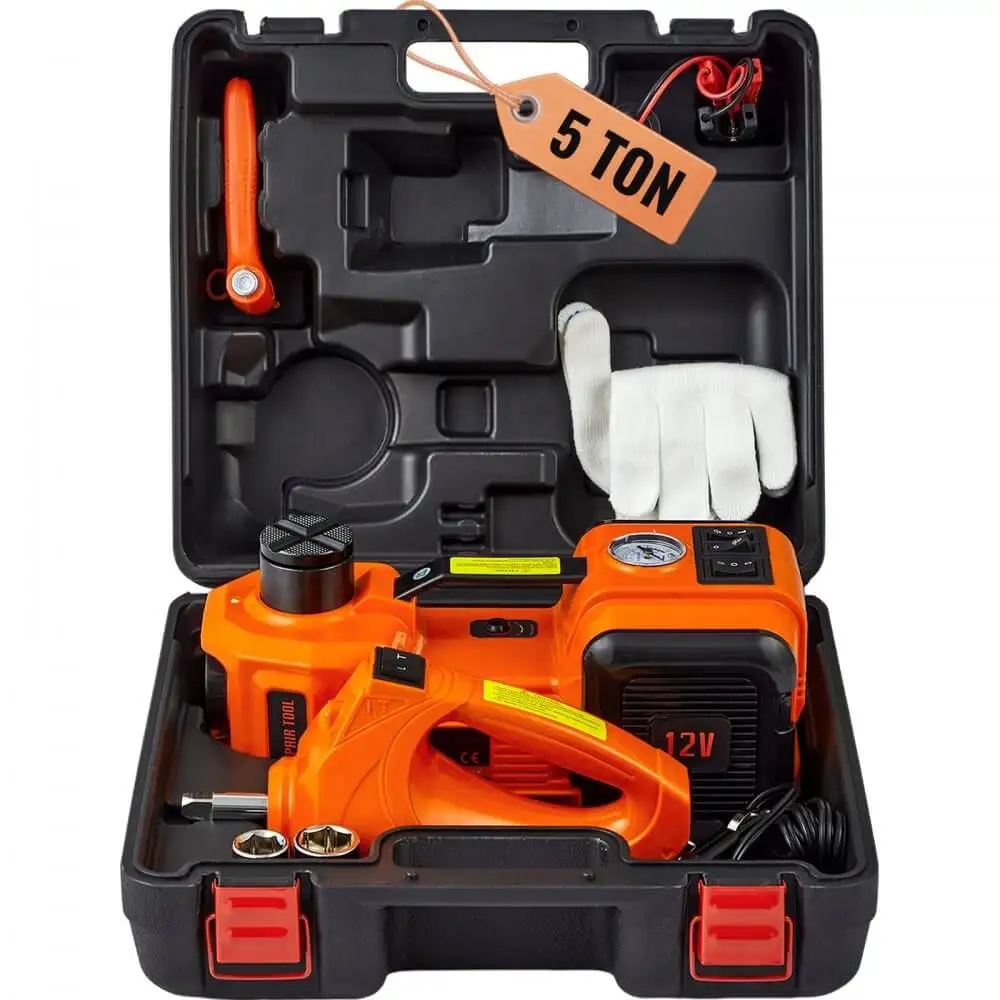
Also, as mentioned already, the quality of your floor jack will determine its overall performance and efficiency. This is why it is advisable to buy from trusted manufacturers. To get quality floor jacks, we suggest that you visit the website of a top-rated manufacturer like VEVOR to browse through the several arrays of high quality floor jacks and other automotive tools available on their platform. The brand is trusted by top auto experts, and you should consider shopping from them as well.

